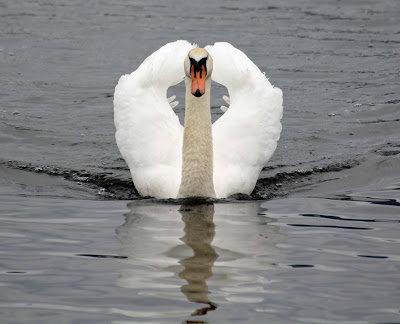Today’s weather forecast was for sun, sun and a little more
sun. A bit unexpected therefore to have rain and hail until early afternoon. I
squeezed in two quick visits to Maridalen one in the morning whilst it was
raining and the other late afternoon when there was glorious sunshine.
Identical birds on both visits. The rain seemed to have caused an arrival of
ducks but unlike last Friday they were diving ducks today: 15 Tufted, 36
Goldeneye and best of all a single male Common Scoter. Six Black-throated
Divers today, although they are not necessarily new birds but just local
breeding birds that are feeding on Maridalsvannet (there is just a single pair
that breeds here).
In fields in the north of Maridalen an impressive flock of
400 Chaffinches which contained only 10 or so Bramblings.
In the afternoon I took the girls to ride their bikes around
Fornebu. No real migration happening here but a single Wood Sandpiper was my
first of the year and a Little Ringed Plover was flying around in its display
flight.
The girls threw biscuits to the gulls and we had quite a
good gathering of mostly Black-headed. One was colour ringed (it was ringed on
6 May 2011 on Bygdøy, Oslo as a 2k and this is the first sighting since)
 |
| Black-headed Gull J9P1. Apparantly a 2nd summer (3k) |
Another had a Norwegian metal ring that I was able to photograph:
Here you can see that it is a Stavanger Museum ring and the
first two numbers are 62 and the last four are 5631 but it looks like there is
one number that I didn’t manage to photograph (I don’t actually know how many
numbers there are on a Norwegian ring)
 |
| A noisy pair of Common Gulls |
 |
| Smart adult "intermedius" Lesser Black-backed Gull |
 |
| The local male Mute Swan also wanted some biscuits |











